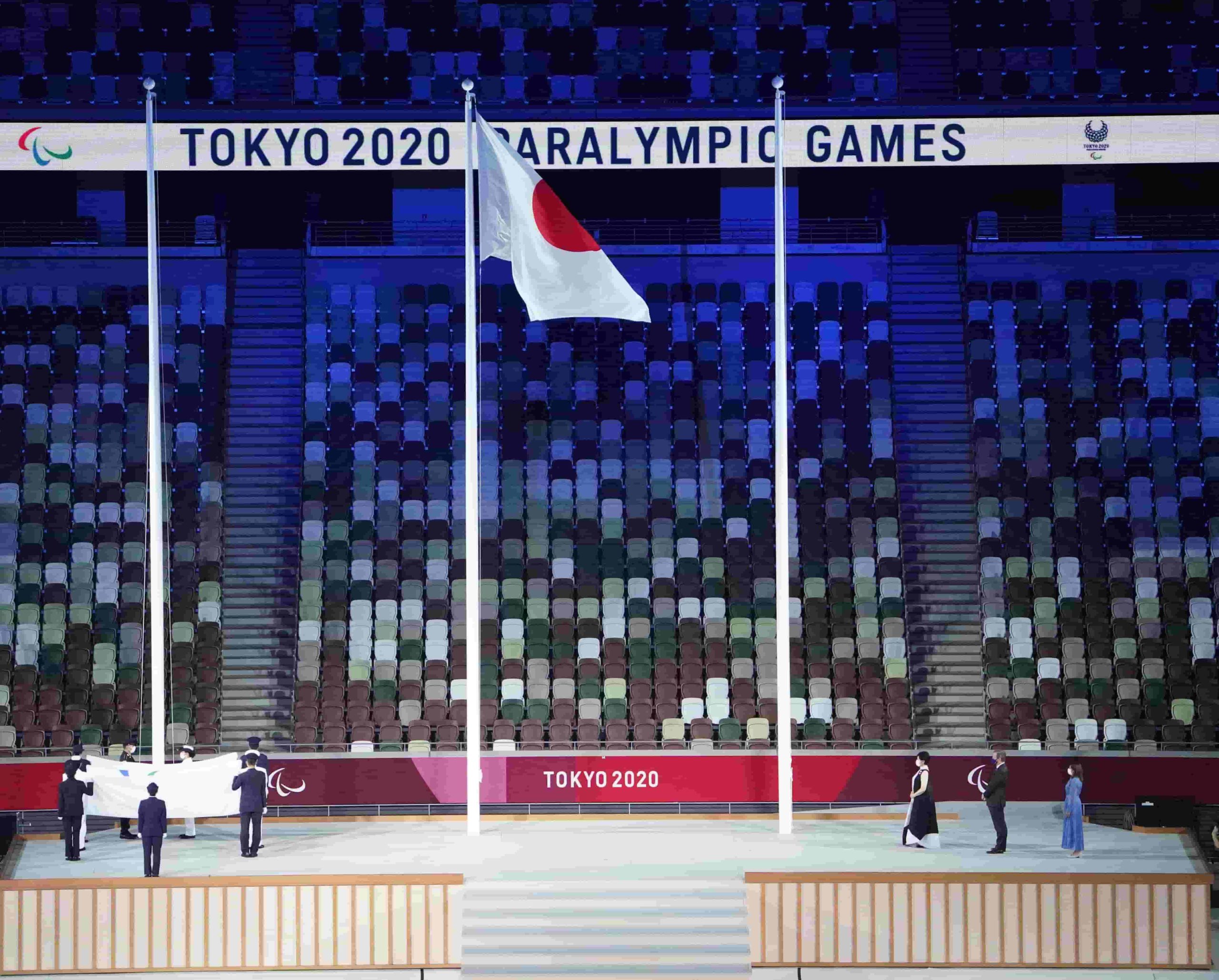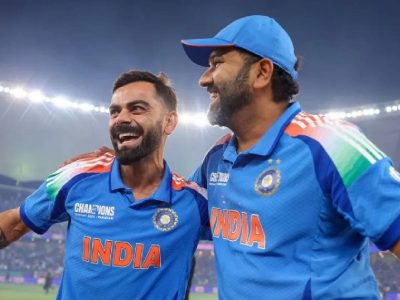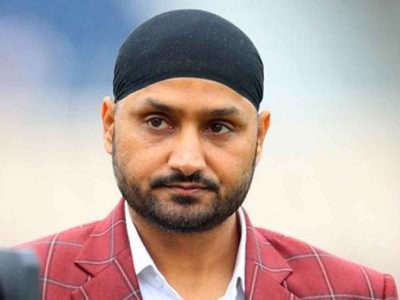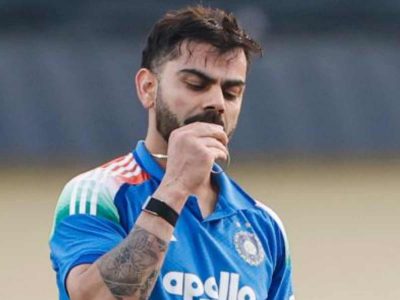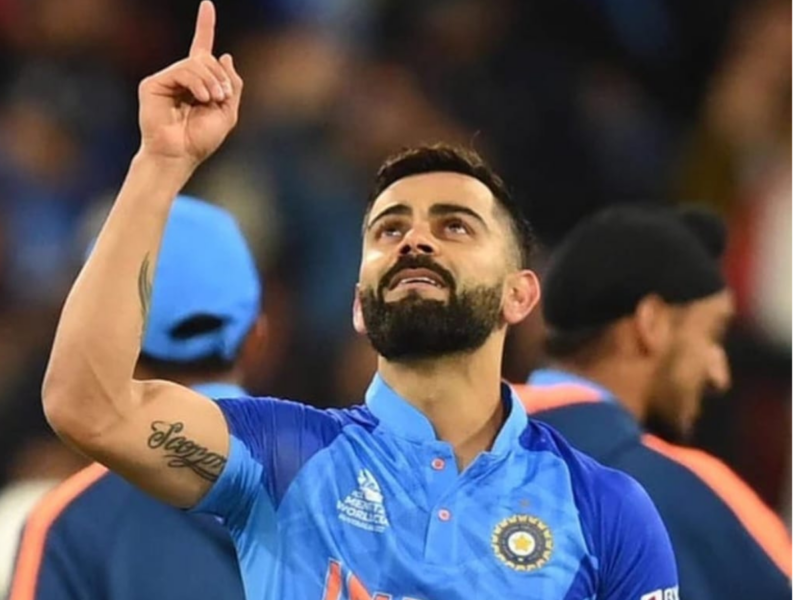After India’s stunning performance at the 2020 Tokyo Paralympics, the Patriot takes a look at the athletes and the problems they have had to face
This is India, and in our country the challenges for the differently-abled are tougher. Above that if you are an athlete then apart from overcoming your body’s limitations, you will need to overcome the society’s inherent scepticism before finding a single “sports building or infrastructure” which is completely accessible to the differently-abled.
Well, that’s not just an observation but a fact pointed out by an audit initiated by government agencies in 2016 (previous to the Rio Paralympic year) where it was pointed out that “These athletes only have sheer willpower to overcome all those difficulties which have been created by apathy of those who have not even applied their minds before constructing India’s single urban buildings with a simple ramp essential for the differently-abled person”.
Challenges brought on by the pandemic since March 2020, made it even more difficult for Indian Paralympians to get basic facilities or the system’s encouragement to go out and practice. Getting practice or training facilities during the time of complete lockdown was even difficult for India’s normal Olympic-bound athletes, then imagine the problems our Paralympians face just to reach their close-by stadiums?
The limited camps that were to be conducted by the Paralympics Committee of India (PCI) were to be cancelled because of the pandemic. And this was the situation worldwide where most of the Paralympian athletes were forced to train alone. As per a study conducted by an American agency, “The level of isolation experienced over the last one-and-a-half-years was especially difficult for these athletes, as connecting with teammates and coaches has been an integral part of maintaining healthy mental well-being through the pressures of preparing for the Games”.
Despite all those challenges, the 2020 Tokyo Paralympics proved to be the best ever Games for India. If in Rio 2016, only 19 Paralympians took part from India, then at 2020 Tokyo India won a total of 19 medals — including 5 gold, 8 silver and 6 bronze medals — by a strong and biggest ever contingent of 54 para-athletes across as many as nine sporting disciplines.
Badminton and Taekwondo made their debut in Tokyo, both of which were represented by India. Of the 19 medals that India won at Tokyo — eight came in athletics, five in shooting (2 gold), four in badminton (2 gold), and one each in archery and table tennis.
The gold medallists from the Indian contingent at Tokyo were Avani Lekhara in women’s 10 meters Air Rifle Standing SH1, Pramod Bhagat in men’s singles SL3 badminton, Krishna Nagar in men’s singles SH6 badminton, Sumit Antil in men’s Javelin Throw F64, and Manish Narwal in mixed 50 meters Pistol SH1.
India won a staggering eight silver medals. The ones winning the medals are Bhavinaben Patel in women’s Singles Class 4 Table Tennis, Singhraj Adhana in mixed 50 meters Pistol SH1, Yogesh Kathuniya in men’s Discus F56, Nishad Kumar in men’s High Jump T47, Mariyappan Thangavelu in men’s High Jump T63, Praveen Kumar in men’s High Jump T64, Devendra Jhajharia in men’s Javelin F46, and, Suhas Yathiraj in men’s Singles Badminton SL4.
Avani Lekhara in women’s 50 meters Rifle 3 Positions SH1, Harvinder Singh in men’s Individual Recurve Archery, Sharad Kumar in men’s High Jump T63, Sundar Singh Gurjar in men’s Javelin Throw F46, Manoj Sarkar in men’s Singles Badminton SL3, and Singhraj Adhana in men’s 10 meters Air Pistol SH1 won the bronze medals.
Since making its first appearance at the Paralympics in 1968, India had won 12 medals in total till the 2016 Rio edition. The country has now massively improved upon that entire number by seven medals at the Tokyo Paralympics 2020 alone.
Out of a total of 162 nations, India have finished 24th in the overall medal tally.
When the 2020 Olympics ended, India was on a high, especially after Neeraj Chopra’s gold on the final day. Little did we know, the high would go higher.
We take a look at India’s medal winners at the 2020 Paralympic…
Meet India’s 19 medallists at 2020 Tokyo Paralympics
Avani Lekhara (Shooting, gold & bronze)
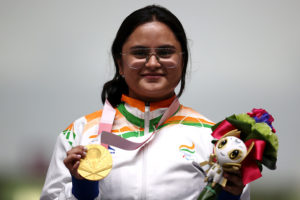
The 19-year-old Avani Lekhara became the first Indian woman to win a Games gold (10m Air Rifle) and later added a bronze in 50m Rifle 3 positions. Confined to a wheelchair ever since her accident at an age of 11 in 2012, Avani was inspired to take up shooting after reading Abhinav Bindra’s autobiography where he detailed his journey to being an Olympic champion. She took up shooting in 2015 as a hobby after her father took her to a range during one summer vacation. As her coach Suma Shirur puts it, Avani is a great fighter that is true of all Paralympians. She is the first Indian woman to win a Paralympics gold medal and only the second Indian to win multiple medals at the same Games. Avani won gold in the women’s 10m Air Rifle Standing SH1 — India’s first in the sport — and followed it up with the bronze in the women’s 50m rifle 3 positions SH1.
These two medals from the four events she participated in (Mixed 10m Air Rifle Prone SH1 and the mixed 50m Rifle Prone event being the other two).
Even for many able-bodied rifle shooters, balancing the 10m and 50m 3P is a challenging task. The distance is not the only difference; the match time and endurance needed is virtually tripled. But Avani has shot down medals in both events in the span of a week with a world record score of 239.7.
Sumit Antil (Javelin Thrower, gold)

The most stunning performance by an Indian at Tokyo came from Sumit Antil. He didn’t just win gold in the men’s javelin throw F64, he won by breaking the world record, thrice during the final. Sumit’s journey to the top was not that easy after his dreams of becoming a wrestler were dashed after he met with an accident and his leg had to be amputated. He, however, was introduced to para sports and the rest is history.
Sumit overall shattered the world record five times over during the event. He started with 66.95m in his very first attempt, which broke his own previous personal best of 62.88m by a sizable margin. Sumit then improved upon that on his second attempt with a massive effort of 68.08m as he led the field from the start. His next two attempts were 65.27m and 66.71m, both of which would have broken the record he had set at 2019 World Para Athletics Championships in Dubai. But he saved the best for later as he threw 68.55m to better his new world record another time.
Manish Narwal (Shooting, gold)
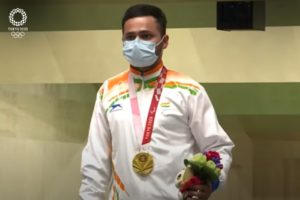
The 19-year-old Manish Narwal comes from a sports-oriented family in Ballabgarh in Haryana and always wanted to become a football player. But his impairment from birth meant he couldn’t quite fulfil his dream. Narwal has an inborn impairment to his right hand and he can’t raise it, not even while accepting the medal as we saw, but his left arm was enough to lift the pistol and win the gold.
After picking up shooting at the age of 15 in 2016, Manish rose to Rank 13 in the world at the age of just 16 and has been a consistent top performer since 2017.
Manish was already a world champion when he reached Tokyo in P4 Mixed 50m Pistol SH1 and left with a Paralympic record and a gold medal.
Pramod Bhagat (Badminton, gold)
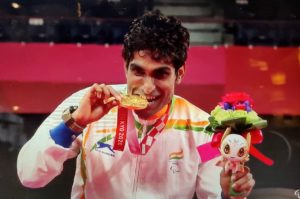
Shuttler Pramod Bhagat, who won a gold medal in the Tokyo Paralympics in SL3 category, did not have enough money to buy even a badminton racket in early stages of his career. Bhagat, a native of Bihar’s Hajipur town in Vaishali district had natural talent in sports. But he became a polio victim when he was just five. Inadequate medication meant his leg was deformed.
As his family’s financial state was not good, it was difficult to even buy a badminton racket during early days. Then his uncle and aunt managed to buy a racket for him and he started playing badminton while studying in Bhubaneswar. And he was known there for beating all able-bodied players. Bhagat won the Men’s Singles SL3 event badminton gold medal match against Great Britain’s Daniell Bethell at Tokyo. This is India’s first medal in badminton at the Paralympics Games. Bhagat was 8 points behind in the second game before making a comeback and wrapping up the match 21-14, 21-17.
Krishna Nagar (Badminton, gold)
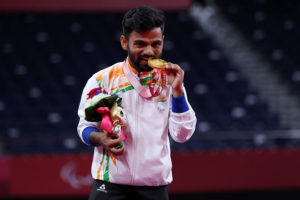
Krishna Nagar’s father Sunil Nagar was told at the age of one-and-a-half that his boy would face growth stagnancies, a medical condition that left him short-statured since childhood. Diagnosed with dwarfism, Krishna stands at 4 feet and 3 inches. And he became a loner after being bullied even till five years ago in college. He stopped going out and interacting with friends. At this time, Krishna took up badminton as a hobby in 2017.
His father decided to take his son to a badminton academy at the Sawai Man Singh Stadium in Jaipur. The move turned out to be a watershed moment in Krishna’s life.
His father only told him one thing that “He might not be able to help him grow tall, but he certainly could learn to jump as high as he wished”. And when Krishna claimed a gold in the men’s singles badminton SH6 category, India’s 19th and last medal at Tokyo, by beating Hong Kong’s Chu Man Kai 21-17, 16-21, 21-17 in the men’s singles SH6 final.
Krishna tried high jump, long jump, volleyball and basketball with my younger brother Raghav, who is 5 feet 8 inches. Though he didn’t become champion in all those disciplines, that certainly helped him jump to smash in badminton.
Silver medallists
Bhavinaben Patel (Table Tennis, silver)
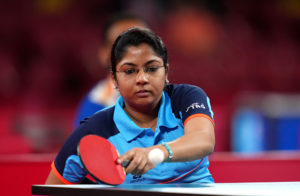
PHOTO: Getty
Indian table tennis player Bhavinaben Patel signed off with a historic silver medal in her maiden Paralympic Games after going down 0-3 to world No. 1 Chinese paddler Ying Zhou in the women’s singles class 4 final. The 34-year-old, who was afflicted with polio as a toddler, was lucky to have got a robot as practice partner during the pandemic when it was almost impossible for her to continue preparations for the Paralympics. Bhavinaben was lucky to have got a robot through Sports Authority of India’s Target Olympic Podium Scheme (TOPS) scheme. Robots have many advanced features like you can get strokes from different angles. And that helped her improve her game at the right time before the Games.
Nishad Kumar (High Jump, silver)
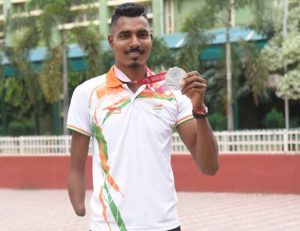
Nishad Kumar’s father Rashpal is a mason and mother Pushpa Devi is a homemaker. They live in their ancestral village of Badaun in Amb, Himachal Pradesh. Nishad had lost his right hand to a tragic accident at a tender age of eight. He had accidentally put his hand in a fodder-cutting machine. But that didn’t stop him from winning a silver medal in the men’s high jump T47 event with an Asian record effort of 2.06m.
Nishad’s life changed after he got admission in Chandigarh’s DAV College and started training under athletics coach Naseem Ahmed and Vikram at the Tau Devi Lal Stadium in Panchkula.
Yogesh Kathuniya (Discus Thrower, silver)
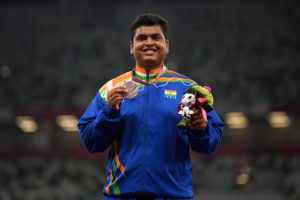
Yogesh Kathuniya was suffering from paralysis at the age of just seven when his mother Meena Devi was told about his rare neurological disorder, Guillain-Barre syndrome. His mother, however, used to tie him to her scooty’s pillion seat to get him treated at the Chandimandir Military Station Army Hospital near Chandigarh. Yogesh was confined to a wheelchair in 2006 but his mother’s constant efforts to provide him regular physiotherapy paid off as Yogesh started taking part in para sports in 2017 while studying at Delhi’s Kirori Mal College. His hard work and determination finally paid off when he won a silver medal in the men’s discus throw F56 event.
Devendra Jhajharia (Javelin Thrower, silver)
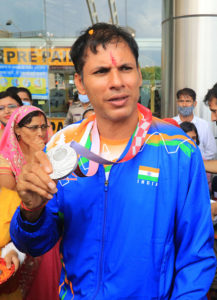
At 40 when most other able-bodied athletes bid goodbye to the competitive sport, Devendra Jhajharia clinched his third Paralympic medal, a silver this time. Jhajharia, who lost his left hand after accidentally touching an electric wire while climbing a tree at the age of eight, is already India’s greatest Paralympian after winning gold medals in 2004 and 2016 Games in F46 classification.
And mind it, Jhajharia won this silver by pulling off a new world record and personal best throw of 64.35m. But gold winner Sri Lankan Dinesh Priyan Herath Mudiyanselage was too good for the entire field by sending javelin to 67.79m.
Mariyappan Thangavelu (Long Jump, silver)
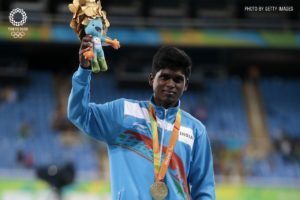
Mariyappan Thangavelu won silver in the men’s high jump final in Class T42 by leaping the mark of 1.86m. He was initially given the honour of being the flag bearer at the opening ceremony, but as he was identified as a close contact of a Covid-19 positive person so was not able to participate in the opening ceremony. Thankfully, he was not tested positive and was allowed to compete in his event. This is his second medal at the Games, having already won a gold in Rio 2016. Mariyappan and USA’s Sam Grewe soon completed the 1.86m mark on their third attempt as Sharad had to be satisfied with a bronze after seeing three red flags.
F/T42 classification in track and field is for athletes with a leg deficiency, leg length difference, impaired muscle power or impaired passive range of movement in the legs, with athletes competing in a standing position.
Now, he wants to work for the state government in Tamil Nadu. Thangavelu also has plans of setting up an academy in Salem or Coimbatore to develop the next generation of athletes.
Singhraj Adhana (Shooter, silver & bronze)
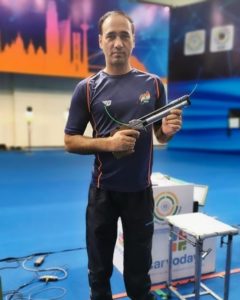
It was at the end of May that 39-year-old Singhraj Adhana contracted Covid-19 virus and saw his oxygen dropping below 50. Already a diabetic, Adhana spent more than a week in the ICU only after a local MLA helped him get a bed. All this while, Adhana kept the pictures of his grandfather late Subedar Major Sumera Ram Adhana, a World War 2 veteran of the British Indian Army and winner of Indian Distinguished Service Medal and Military Cross, to motivate himself. Despite the short time to practice after recovering from Covid-19, Adhana won silver in the P4 Mixed 50m Pistol SH1 and a bronze in the P1 men’s 10m Air Pistol SH1.
Praveen Kumar (High Jump, silver)
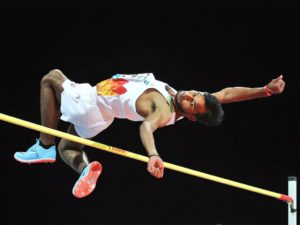
It was a couple of years back that high jumper Praveen Kumar was trying to get admission to Delhi University under the normal sports quota. But he was denied admission on the basis that “he was differently-abled”. In fact, the authorities told his mentor and coach Dr Satyapal Singh to apply through the differently-abled quota, which is a much easier path to get a college admission.
But Praveen refused to follow the advice and made calls to top University administrators to at least allow him to appear in the trials. And as he was sure about himself, Praveen finished second in the trials, competing against non-disabled athletes, and bagged a place in the Bachelors of Arts course through the sports quota.
This was many of his victories against the system which was hell bent to prove him lesser than the others. In fact, he was denied entry in the high jump competition in Class IX of a school-level sports meet. Even then, he fought and not just competed but also won a gold at the meet.
In Tokyo, debutante 18-year-old Praveen clinched the silver medal in the men’s high jump T64 event of the Paralympics by setting a new Asian record with a 2.07m jump to finish behind Great Britain’s Jonathan Broom-Edwards.
Suhas Yathiraj (Badminton, silver)
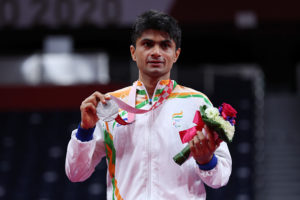
Suhas Lalinakere Yathiraj became the first civil servant to represent India at the Paralympics. He is a highly-reputed government officer, participating in Para-Badminton at the Tokyo Paralympic Games 2020. He is currently serving as a District Magistrate in Gautam Buddh Nagar, adjoining New Delhi. And by winning a historic silver after going down fighting against top seed Lucas Mazur of France in the men’s singles SL4 class, this 38-year-old who has an impairment in one of his ankles, proved his belief right that “sports help you to overcome fear and to maintain your body and mind”.
Suhas is an Indian Administrative Service (IAS) officer of the 2007 batch and has little time to train as he was busy serving people during the Coronavirus pandemic since joining his current posting in April 2020.
Sunder Singh Gurjar (Javelin Throw, bronze)
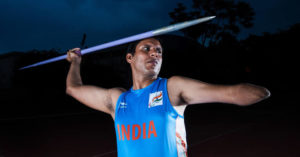
Till 2015, Sundar Singh Gurjar was competing in able-bodied javelin throw competitions and was even a part of the junior national camp along with Tokyo Olympics gold-medallist Neeraj Chopra. Sundar, who has now won his maiden Paralympic bronze, battled not just loss of limb but also suicidal thoughts since a metal sheet fell on him at his friend’s place leading to amputation of his left hand. It was his coach Mahavir Saini who motivated him to carry on with life and return to the turf in the para-athlete category. In a year’s time, he qualified for the 2016 Rio Paralympics, but once again left shattered when disqualified in the Games. He won gold in the 2017 and 2019 World Para Athletics Championships besides winning a silver in the 2018 Jakarta Para Asian Games.
The Jaipur-based Sundar finished third at Tokyo with a best effort of 64.01m to win a bronze, finishing behind Jhajharia in the men’s javelin throw F46 final.
Sharad Kumar (High jump, bronze)
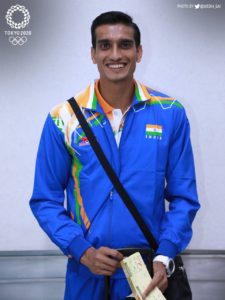
High jumper Sharad Kumar has been going through traumas of bullying ever since his childhood. Having suffered polio in his left leg after being given a fake polio dose, Sharad was planning to withdraw from the Tokyo final event as he got injured during a practice session just before it. The 29-year-old spoke to his family about it and it was then that his father told him to recite the Bhagwat Gita and just concentrate on his event. It was simply not easy for a disturbed Sharad but he put all his energy to follow the advice of his father. And here he…
A bronze in the men’s high jump final at the National Stadium in Tokyo in Class T42 after scaling his season best mark of 1.83m means a world to this Bihar’s first-ever Paralympic medallist. Sharad has studied in Delhi’s Modern School and got his Master’s degree from prestigious JawaharLal Nehru University.
Harvinder Singh (Archery, bronze)
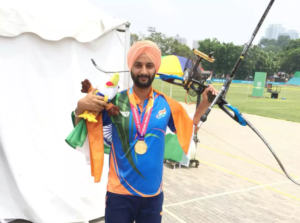
India’s first Paralympic medal winner archer Harvinder Singh even turned his farm at a Punjab village into a practice ground during the lockdown. The 31-year-old Harvinder had dengue when he was just one-and-half years old and a local doctor administered him an injection that had an adverse effect and his legs stopped working properly.
But that didn’t stop this economics scholar from the Punjabi University, Patiala, from putting extra hard work to win a historic archery bronze in the men’s individual recurve event. Before this, he was the first athlete from India to win a gold medal at a major para competition in the 2018 Asian Games.
Manoj Sarkar (Badminton, bronze)
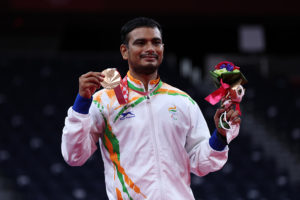
Manoj Sarkar won the bronze medal after beating Daisuke Fujihara 22-20, 21-13 in the men’s singles SL3 event. The 31-year-old earlier crashed to an 8-21, 10-21 defeat in the semifinals against Great Britain’s Daniel Bethell.
The 31-year-old Manoj, whose right leg was affected after he contracted polio at age one, took up badminton at age five but it was the passion to win against his elder brothers which led him to play the sport seriously. He played inter-school competition against able-bodied players till the 11th grade before starting to compete in para-badminton in 2011. He won a gold in the SL3 singles at the 2016 Asian Championships in Beijing. In 2018, he received the Arjuna Award and a year later, he was named Para Sportsman of the Year at the Sportstar Aces Awards.
(Cover: Getty)

